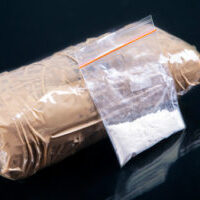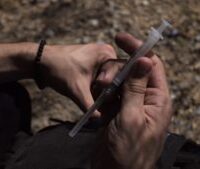Drug Fact Sheet: Cocaine and Crack Cocaine
This month’s Drug Fact Sheet is looking at cocaine and crack cocaine. Where did this drug originate and why is it still so prevalent? History Cocaine is derived from the coca plant, native to South America. Indigenous people of the area have chewed the leaf for centuries in daily life as well as a part of religious ceremonies. Cocaine was only isolated from the leaf in 1860 by a German chemist, but around the same time, other Europeans were beginning to experiment with its recreational uses. In the latter half of the 19th century, pharmaceutical companies quickly picked up on the anaesthetic properties and marketed the substance to doctors. However, many patients died of accidental overdoses in surgery and so it did not remain in favour. Criminalization The USA introduced legislation to criminalize the sale and use of coca and opium products in 1914. However, cocaine had a huge resurgence in the 1980s, which included the introduction of crack cocaine. Crack cocaine is produced by dissolving powdered cocaine in water and ammonia and boiling this mixture down until it is solid. This is then broken into “rocks” and sold to people to smoke. Smoking crack elicits a strong yet short high, making it even more addictive than cocaine. Crack is also cheaper than cocaine powder, and in 1985 a rock only cost $5 in most US cities. By the late 80s, many cities who saw a rise in crime and deaths related to crack use declared a “crack epidemic”. Physical Effects Short-term effects of cocaine are euphoria, increased energy, and heightened sensitivity to sound and touch. It can also reduce the desire for food and sleep. Cocaine’s effects are felt quickly; within a few minutes if snorting powder and almost instantly if smoking crack. However, its effects are short-lived, usually lasting from a few minutes to half an hour. The physiological effects include dilated pupils, constricted blood vessels as well as increased body temperature, heart rate, and blood pressure. Cocaine-related deaths are usually the result of cardiac arrest or seizures. The mixing of drugs like cocaine and alcohol or cocaine and heroin increases the chance of overdose and death. Long-term use of cocaine has lasting effects on the brain. Illicit drugs not only affect the pleasure centres of the brain, they also affect the brain pathways that respond to stress. Research has shown that increased stress leads to increased desire for cocaine among regular users. Cocaine also reduces the efficacy of the decision-making area of the brain, the orbitofrontal cortex. Lack of self-insight and inability to recognize and adapt to negative consequences of continued drug use are effects of the cortex’s lowered function. Treatment Almost all drug treatment facilities in Canada will be able to help you or a loved one with cocaine addiction. It is one of the most popular illicit drugs, so drug rehabs will have treated many people before with a similar problem. Please contact our specialist and they will work with you to find the right facility for you. References: History of Cocaine Cocaine JMC 2018.06.19 The post Drug Fact Sheet: Cocaine and Crack Cocaine appeared first on Canada Drug...
Drug Busts Throughout Okanagan Valley
While the opioid crisis has affected people across Canada, BC has been one of the hardest hit provinces. Many news stories focus on the problems in larger cities like Vancouver, but forget that other more rural centres are in the midst of the crisis too. The Okanagan Valley, a vacation hotspot in the Interior approximately 4 hours east of Vancouver, has long been known as part of the “Coke Highway” and is a conduit for drug running across the province. However, recent coordinated RCMP efforts across districts have lead to some major drug busts, stifling the supply chain. Recent Okanagan Drug Busts On June 22, Vernon North Okanagan RCMP arrested a woman they believed to be linked to a drug trafficking group operating in the area. As part of this investigation RCMP executed a search warrant in the Lake Country area and found cash, 523 street-level baggies of a heroin/fentanyl mix, 457 street-level packages of crack cocaine, and 82 street-level packets of methamphetamine. The woman was found with street-level packets of drugs and a large amount of cash when she was arrested. The RCMP estimate the value of the drugs seized to be $30 000 and believe they have made a dent to the local drug trade by taking out this higher level operation. A week later, Penticton RCMP’s Targeted Enforcement Unit seized a “significant quantity” of various drugs, as well as a handgun in Summerland. A man at the scene was arrested, and charged with three counts of trafficking in controlled substances and two firearms offenses. These police raids are welcomed by the area as many families have already lost loved ones to opioid overdoses. In fact, Kelowna leads the entire country in opioid-related hospitalizations. According to 2016-2017 data, Kelowna had 37.9 out of 100 000 people hospitalized due to opioid poisoning. By comparison Vancouver, considered one of the most problematic areas, only had 20. References: Police Arrest One, Find $30k Worth of Drugs in North Okanagan Bust Police Nab Drugs, Firearms Kelowna Tops Canada for Rate of Opioid Hospitalizations The post Drug Busts Throughout Okanagan Valley appeared first on Canada Drug...
Indigenous Addiction Treatment in Canada
Indigenous addiction treatment in Canada is an important component of boosting First Nations mental health and wellness. There are many drug rehabs and alcohol treatment programs in Canada, and some serve specific populations. For example, last month we wrote about LGBT specific drug and alcohol treatment in Canada. This blog will explain why there is a need for indigenous specific treatment and how to access publicly funded First Nations drug and alcohol programs. Indigenous Addiction Treatment in Canada The federal government funds the National Native Alcohol and Drug Abuse Program (NNADAP) which incorporates prevention, research, treatment, and training. There are many NNADAP funded programs across the country. However, there are also provincial bodies that are First Nations specific. For example, BC has the First Nations Health Authority (FNHA) which helps facilitate 10 residential treatment centres in the province that are NNADAP funded. These treatment centres are relatively evenly spread across the province giving more coverage to rural communities. While services and client type varies between facilities, these drug and alcohol rehabs accept those with physical disabilities, concurrent disorders, clients stabilized on methadone or Suboxone, and clients on prescribed psychoactive medication. The federal government has a list of all its NNADAP funded facilities here. BC has 11, Alberta has 7, Saskatchewan has 10, Manitoba has 5, Ontario has 10, Quebec has 6, and the Atlantic provinces share 6 (though there are none on PEI). The majority of these Canadian drug and alcohol treatment facilities are inpatient and many offer outpatient services as well. While they provide much of the same treatment you would receive in a regular publicly funded program, they usually centre traditional healing methods. Traditional healing often takes place on the land and can involve different kinds of cultural ceremonies. FNHA defines traditional healing as the “health practices, approaches, knowledge and beliefs incorporating First Nations healing and wellness while using ceremonies; plant, animal, or mineral-based medicines; energetic therapies; or physical/hands on techniques”. Why Conventional Treatment Can Benefit From Traditional Healing A 2012 study published in Substance Abuse Treatment, Prevention, and Policy looked at cultural interventions to indigenous addiction treatment in Canada and the USA. Just over half of the programs the study looked at were residential, and all of them integrated both Western and “culture-based” treatment services. While there was a wide range of traditional healing methods implemented, sweat lodge ceremonies were used in 68% of treatment programs. The results showed that all areas of wellness were improved in these programs, particularly in reducing or eliminating substance use problems. Although the study concedes that more research needs to be done, there is strong evidence that traditional healing in addiction treatment is beneficial in all areas of wellness. If you are looking for more indigenous addiction treatment options have a look at our First Nations specific treatment page or contact our specialist for help. References: Addictions Treatment for First Nations and Inuit Traditional Healing Cultural Interventions to Treat Addictions in Indigenous Populations: Findings from a Scoping Study JMC 2018.06.19 The post Indigenous Addiction Treatment in Canada appeared first on Canada Drug...
Harm Reduction and Supervised Injection Sites in Canada
Harm reduction is a term that Canadians are hearing more and more as the opioid crisis deepens and public health officials look for ways to mitigate the fallout. Supervised injection sites are a key component to a lot of harm reduction policies, and both concepts need to be better understood. Some Canadians think that needle-exchange programs and supervised injection sites are the ‘government giving addicts free drugs’ and don’t understand why this is the government’s response. This blog will explain what these two concepts are, and why they are considered to be both innovative and effective in the fight to save substance users’ lives. What is Harm Reduction? The Canadian Drug Policy Coalition defines harm reduction as “policies, strategies and services, which aim to assist people who use legal and illegal psychoactive drugs to live safer and healthier lives.” The Coalition believes any person has the right to receive respect, compassion, and the services they require whether they choose to decrease their substance use or not. The BC Centre for Disease Control includes a number of services and strategies under the umbrella of harm reduction, such as: overdose prevention and response training, impaired driving prevention campaigns, needle distribution programs, substitution therapies, supervised consumption facilities, support programs and outreach. This is a good reminder that harm reduction is not just about creating access to clean supplies and space, but also to provide outpatient services like education and peer support programs. These support services make it easier for people to reduce their consumption of substances, and find recovery treatment. What Does Harm Reduction Look Like in Canada? Despite opposition, in 2007 the Conservative federal government removed harm reduction as an official element of the country’s federal drug strategy. During the same time, Canada opposed harm reduction in international forums, and in 2015 passed Bill C-2 that created unnecessary hurdles to establishing supervised consumption sites. The federal Liberals have not repealed Bill C-2, even in the midst of the opioid epidemic. Bill C-2 requires health authorities to go through many public consultation meetings and extra red tape to get a permit to operate a supervised injection site. Vancouver Coastal Health said that the process to apply for exemptions is “extremely challenging” and involves a large amount of health-care resources that “could be better spent on direct client care and addiction treatment.” However, due to the dramatic increase in overdose deaths over the last two years provinces are putting in their own protections. For example, in 2016 Alberta implemented a harm reduction strategy with supervised consumption sites at the heart of their plan to save opioid user’s lives. Vancouver, and BC as a whole is also one of the most vocal proponents for nationwide harm reduction policies as the province has seen the most overdose deaths, totaling over 4000 in 2017 alone. Supervised Injection Sites in Canada In 2003, Insite, the first supervised injection site in North America opened in Vancouver’s Downtown Eastside. Insite has been a testing ground to prove the efficacy of supervised consumption sites, and has provided a kind of blueprint for other provinces looking to increase their services. One of the biggest concerns local residents and city officials usually have about supervised consumption sites is that they will increase the amount of littering, loitering, and drug use in their community. However, Insite and other supervised injection sites have shown that this is not the case and in fact they decrease the amount of public drug use in the area. Substance users are still members of our community, and their health care needs should be just as important...
Needle Exchange Program Delayed for Canadian Prisons
We reported in May that Correctional Services Canada (CSC) had announced plans to launch a trial needle exchange program in two Canadian prisons this month. Yesterday, CSC announced the planned program for a men’s federal prison and the federal women’s Kitchener institution has been delayed one week. The manager of epidemiology services for CSC said documents needed to be tweaked and redrafted before the program could effectively be rolled out. This program is part of a new harm reduction strategy for Canadian prisons. Why Introduce Needle Exchange Programs into Canadian Prisons? There is a strong need for needle exchange programs in Canadian prisons. A 2010 report found that the rates of HIV and Hepatitis C infections in prison are 10 to 20 times higher than that of the general population. Injection drug use and prison tattoos are considered the main reasons for this discrepancy. To help combat this, in 2005 the CSC began a prison tattoo pilot program involving six federal institutions, however the Conservative government of the time ended it in 2006. Drug use doesn’t stop at the prison gates. First-hand testimony from currently and previously incarcerated people show that drugs are the main currency inside. Guards say they are having to fight infiltration from all areas; drones and slingshots with drug-filled tennis balls are just some of the ways of getting contraband into the facilities. Inmates who previously had no or minor drug problems can end up leaving as opioid addicts, a far cry from the ‘rehabilitation’ prisoners are supposed to go through during their term. It is clear that drugs are a huge problem in Canadian prisons, and that injection drug use will happen whether it is condoned or not. Needle exchange programs in prisons make public health sense to protect prisoners who are uninfected, as well as guards and other visitors to the institution. Hopefully the pilot programs start soon and can provide a roadmap for future programs. References: Federal Prisons to Begin Needle-Exchange Program Needle Exchange Program at Kitchener Women’s Prison Begins Today Prison Report Urges Needle Exchange Programs Prison Tattoo and Needle Programs Would Help Curb Hepatitis: Internal Memo Think Prison Forces an End to Drug Addiction? Think Again The post Needle Exchange Program Delayed for Canadian Prisons appeared first on Canada Drug...
Bill C-45 Passes, Legal Cannabis Still Months Away
This week the Senate finally passed the bill to legalize and regulate marijuana, however it will not become law until October 17. This 17 week buffer period was originally only supposed to be 8-12 weeks, however some provinces asked for an extension. It is to give the provinces time to get systems in place to facilitate access to legal cannabis through storefronts and other methods. Canada is only the second country in the world to legalize marijuana for recreational purposes nationwide. What does Bill C-45 entail Purchase fresh or dried cannabis, cannabis oil, plants and seeds for cultivation from either a provincially or territorially regulated retailer, or directly from a federally licensed producer Possess up to 30 grams of dried legal cannabis or its equivalent in public Share up to 30 grams of legal cannabis and legal cannabis products with other adults Cultivate up to 4 plants at home (four plants in total per household) Prepare varying types of cannabis products at home for personal use provided that no dangerous organic solvents are used in the process Quebec, Mantioba, and Nunavut want to be able to provincially regulate against the 4 plants allowed at home. While the federal government has left it to the provinces to do their own implementation of the new law, the Justice Minister has said the federal government will back up any citizen who takes their province to court over this issue. Another bill relating to cannabis legalization also passed recently. Bill C-46 strengthens the laws regarding alcohol and drug impaired driving. This law allows for mandatory roadside impairment checks, however the government is still trying to determine the best devices and tests to use to identify “high” drivers. References: Trudeau Says Pot will be Legal as of Oct 17, 2018 A Look at Each Province’s Rules for Marijuana Legalization The post Bill C-45 Passes, Legal Cannabis Still Months Away appeared first on Canada Drug...









